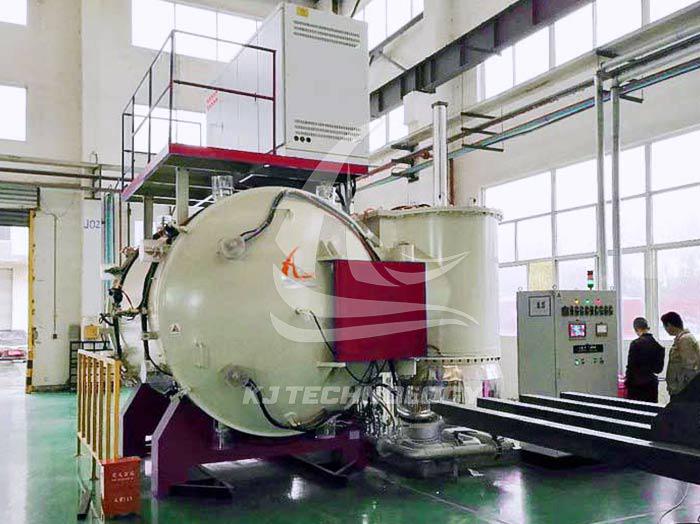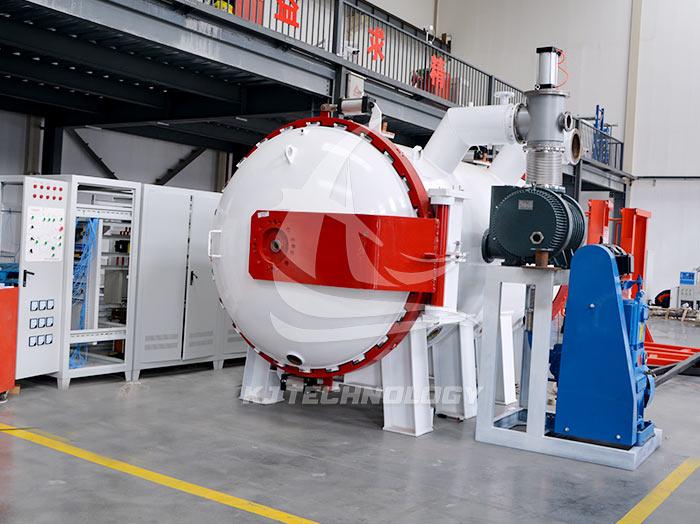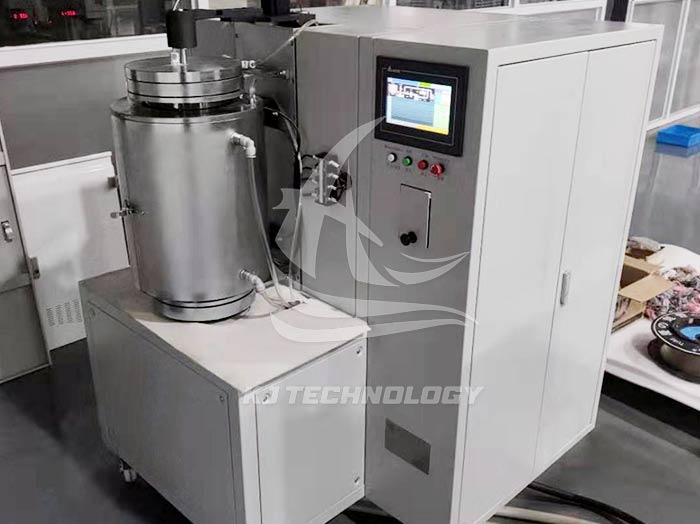High vacuum heat treatment electric furnace sintering ceramic materials
 09-26-2025 Author: KJ technology
09-26-2025 Author: KJ technology
High vacuum heat treatment electric furnaces have significant advantages in sintering ceramic materials. By eliminating gas interference and suppressing oxidation reactions, the density and properties of ceramic materials can be significantly improved, especially suitable for the preparation of high-purity and high-performance ceramics. The following analysis will be conducted from four aspects: principles, advantages, applications, and operational precautions:
1. Working principle
The high vacuum heat treatment electric furnace extracts the air inside the furnace through a vacuum pump, creating a highly vacuum environment (with a vacuum degree of up to 10 ⁻³ Pa to 10 ⁻⁴ Pa). In this environment, ceramic powders or bodies are densified through physical and chemical processes such as viscous flow, diffusion, and evaporation. The specific steps include:
Loading: Place the ceramic material to be sintered into the furnace.
Vacuuming: Using a vacuum pump to remove gas from the furnace and create a vacuum environment.
Heating: Using methods such as resistance heating, induction heating, or microwave heating to bring ceramic materials to a high temperature state.
Insulation: Maintaining a certain temperature for a period of time to promote chemical reactions and crystallization of ceramic materials.
Cooling: Gradually cool the ceramic material to room temperature through a cooling system.
2. Core advantages
Inhibition of oxidation and pollution:
The vacuum environment effectively eliminates reactive gases such as oxygen and nitrogen, preventing ceramic materials from undergoing oxidation, nitriding, and other reactions at high temperatures, and maintaining material purity.
Reduce volatilization loss, avoid impurity pollution, and improve material performance stability.
Promote densification:
A vacuum environment is conducive to the escape of gas from enclosed pores, reducing pore formation and increasing material density.
Promote atomic diffusion recombination, optimize material microstructure, and enhance mechanical properties.
Process flexibility:
Protective gases such as nitrogen, argon, and hydrogen can be introduced to create suitable atmosphere conditions for material processing and meet different process requirements.
Support multi-stage program temperature control to achieve precise control of complex heat treatment processes.
Energy conservation and environmental protection:
Adopting advanced insulation materials and structural design to reduce heat loss and energy consumption.
Reduce emissions of exhaust gas and waste residue, and be environmentally friendly.
3. Application Fields
Preparation of high-performance ceramics:
Suitable for sintering high-performance ceramics such as alumina, silicon nitride, and silicon carbide, improving material strength, hardness, wear resistance, and other properties.
Meet the high-performance requirements of ceramic materials in fields such as aerospace and electronic manufacturing.
Composite material sintering:
Used for sintering ceramic based composite materials, metal ceramic composite materials, etc., to promote material interface bonding and enhance comprehensive performance.
Preparation of special ceramic materials:
Suitable for sintering easily oxidizable and volatile ceramic materials (such as certain non oxide ceramics) to maintain material composition stability.
4. Operation precautions
Vacuum degree control:
Ensure that the vacuum degree inside the furnace meets the process requirements and avoid gas residue causing material performance degradation.
Regularly inspect vacuum pumps, valves, and other equipment to maintain the stability of the vacuum system.
Temperature control:
Adopting high-precision temperature control system (such as PID control) to ensure stable temperature around the set value.
Set reasonable heating, insulation, and cooling curves based on material characteristics to avoid temperature fluctuations causing material cracking or deformation.
Atmosphere control:
Introduce protective gas according to process requirements, adjust gas flow rate and pressure, and create an atmosphere suitable for material processing.
Avoid excessive gas flow that may cause pressure fluctuations in the furnace and affect the sintering effect.
Loading and unloading:
Before loading, ensure that the ceramic material is clean and dry to avoid impurities contaminating the furnace environment.
When unloading, wait for the temperature inside the furnace to drop to a safe range before opening the furnace door to prevent burns.
Equipment maintenance:
Regularly inspect heating elements, vacuum systems, temperature control systems, and other equipment components, and promptly replace aging or damaged parts.
Keep the furnace clean, regularly clean residues, and prevent corrosion of the furnace lining.








